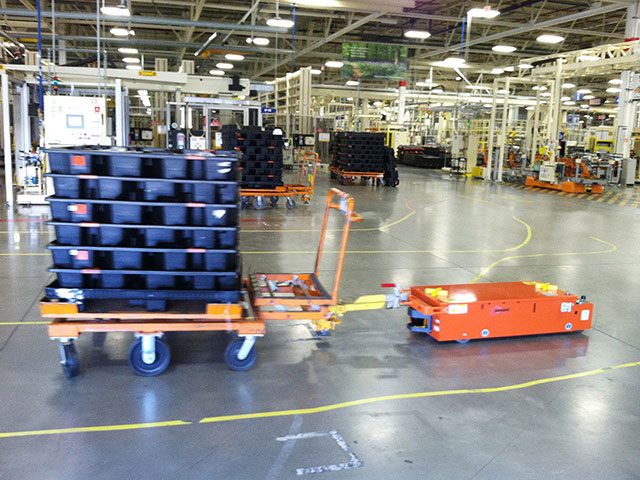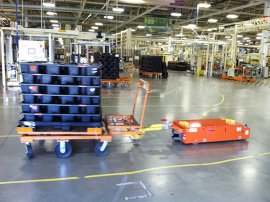1, the driving method is different
In the industrial field application of AGV, considering the importance of factors such as stability and reliability, AGV is generally driven by servo motor, motor and wheel train are integrated structure, the price is more expensive. The AGC only meets the requirements of simple logistics transportation, and is generally driven by an ordinary DC motor, and the price is low.
2, different positioning accuracy
The AGV positioning accuracy standard is ±10mm, which can meet the requirements of the conveyor on the AGV and the ground conveyor.
The AGC positioning accuracy standard is ±20mm, which cannot guarantee the automatic and precise positioning of the ground conveyor.

3, the speed control method is different
The AGV has different speeds in the straight and curved sections, which ensures that the cargo carried by the AGV will not tip over due to the large centrifugal force during cornering.
The AGC has the same speed in the straight and curved sections. If it is high speed, it will be very dangerous when cornering. If the same speed is low, it is difficult to meet the working beat requirements. In general, the manufacturer installs an angle of steel on the curved section of the AGC running route to forcibly correct the running track of the AGC during cornering, otherwise the AGC will deviate from the running route.
4, the connection with the upper system
As an automatic operation equipment, AGV is essentially a subsystem of the customer's system. Although AGV can operate as an independent system, it must accept the customer's instructions to complete a certain task, and return the task to the customer's system after the work is completed. Finish and accept the next task. That is to say, the AGV must be connected to the customer's system (the upper system for the AGV system) to exchange data.
The AGC is not able to connect to the upper system (all AGC examples can prove this), which is the most critical difference between AGV and AGC.
 中文
中文 English
English

